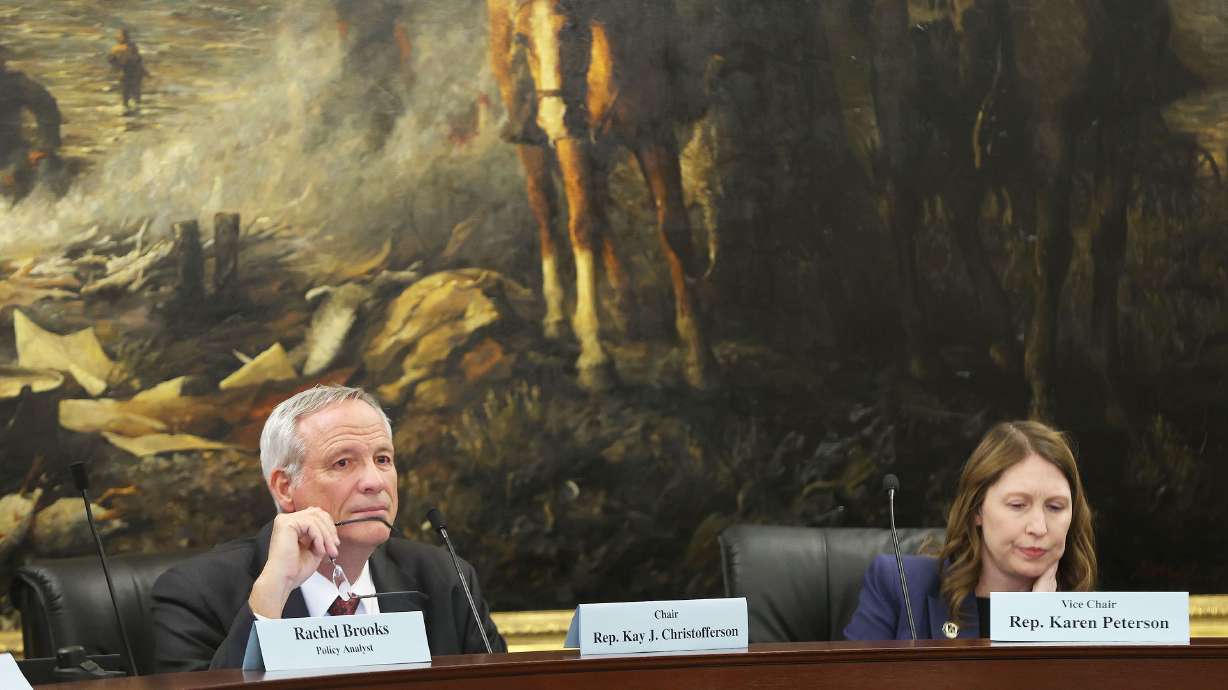Estimated read time: 4-5 minutes
This archived news story is available only for your personal, non-commercial use. Information in the story may be outdated or superseded by additional information. Reading or replaying the story in its archived form does not constitute a republication of the story.
SALT LAKE CITY — Livestock and trains never mix.
As the owner of Diamond G Ranch and Rodeo and co-owner of Utah Iron LLC, a short-line railroad, Steve Gilbert knows that well.
But Utah trains occasionally hit livestock that roam through leased or open-range property. Railroads are not required to report those injuries or deaths, and a collision can create financial issues for farmers and ranchers.
Sen. Derrin Owens, R-Fountain Green, hopes to solve the issue with a bill making its way through the Utah Legislature. But the solution offered doesn't satisfy everyone.
The problem pits railroads against livestock owners. Railroads have concerns about fencing costs and ranchers are concerned about their livelihood.
"Holding railroads accountable (for fencing) would increase the price of transporting things, which would in turn increase the price of whatever they're transporting," Gilbert told the Deseret News.
Product prices will rise if railroads have to pay for and maintain fencing surrounding the railways, he said.
Several farmers who spoke in a House Transportation Committee hearing on Thursday support the bill.
Tammy Pearson, a Beaver County commissioner and livestock owner said, "The problem (of livestock on the tracks) is a nightmare. ... It's always been our understanding that the railroad is required to keep up fences."
SB61 would reinforce existing law that requires fencing along railroad tracks to be maintained. It creates a reporting requirement for when livestock are hit so owners can be reimbursed. A report must be filed within 30 days or the railroad could be fined, according to the bill. It also creates a process for livestock owners to be compensated for animals injured or killed by a train.
The House Transportation Committee endorsed the measure Thursday. It will be heard in the House next. It has already passed the Senate.
The bill includes an indemnification clause, putting responsibility on the railroads to report and maintain fencing even if the tracks are leased to other companies. The railroad that owns the tracks would be liable no matter the train.
Owens said the bill "incentivizes railroad companies that have the right-of-way to keep their fences up — to obey current law." Because the fences have not been maintained, he said, livestock can get onto the tracks.
"They're just creating laws that are going to create more cost to the taxpayer and the consumer," Gilbert said in the committee meeting.
They're just creating laws that are going to create more cost to the taxpayer and the consumer.
–Steve Gilbert, Diamond G Ranch
"This is the law," Owens replied. "It's been in place for years. Maintaining their fencing is nothing new."
"This just encourages (railroads) to follow the law. If they haven't built (fencing) into their cost before now that's pretty negligent business practice," he said.
Gilbert worried the bill is too "one-sided" and holds railroads alone liable for livestock collisions when the accountability should be somewhere in the middle.
The railroads would pay a fee based on mileage to cover the damaged livestock, according to the bill. Funds would go to the Utah Department of Agriculture, which would be in charge of providing compensation.
"There's no reporting requirements ... and it (currently) falls onto the farmers," Owens said. It's an issue because, in many cases, livestock strikes are "out in the middle of nowhere."
The current reporting system, he said, "is not effective."
Owens said in his area, farmers and ranchers have had difficulty getting reimbursed or finding out that their animals have been hit. The process currently, he said, is flawed.
Railroads and livestock owners seem to support at least the reporting requirements in the bill.
It's better to compensate ranchers for the livestock that is injured or killed, Gilbert said. The reporting requirements are an improvement, but the fencing requirements will have negative impacts, he said.
In the committee meeting, Owens said it's hard to know how many animals have been hit. He estimated about 200 a year, but said he can't be sure without the reporting requirements.

Steve Styler, a Union Pacific Railroad official, spoke on behalf of the company.
"According to the records that we have," he said, "there have been fewer than 60 (livestock collisions) in the last four years."
"We think we have some solutions that could work even better than this legislation," Styler said, and hoped the bill would be held in committee to allow for further discussion.
"We can't solve the fencing issues," Styler said. "Cows knock fences over."
Styler said with the length of fence requirements, he has no estimate of the amount of money it would take for fencing to be maintained, or the amount of fencing that is needed.
Daniel Brewer, a train operator, expressed concern over the fine attached to the bill if a report is not filed within 30 days of a livestock collision. Sometimes, he said, operators are unaware of a collision.
Brewer said fences along the railway increase safety, and overall he supports the bill.








